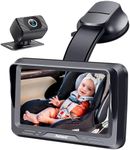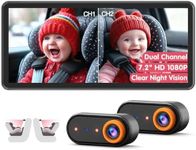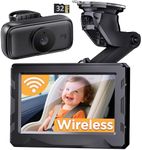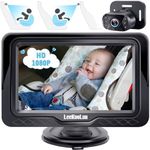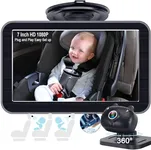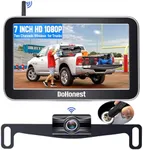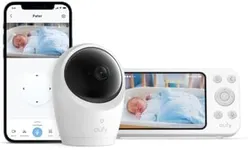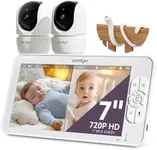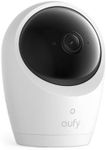Buying Guide for the Best Baby Cam For Car
Choosing a baby cam for your car is all about ensuring your child's safety and your peace of mind while driving. These cameras help you keep an eye on your baby in the back seat without having to turn around, making your journeys safer and less stressful. When picking the right baby cam, it's important to consider how easy it is to install, how clear the video is, and how well it fits your car and your needs. Understanding the key features will help you make a choice that keeps both you and your baby comfortable and secure.Video Quality (Resolution)Video quality refers to how clear and sharp the image from the camera appears on the monitor. This is important because a higher resolution makes it easier to see your baby’s face and movements, especially in low light or at night. Video quality is usually described as standard definition (SD), high definition (HD), or full HD. SD is basic and may look a bit blurry, but it can be enough if you just want to check if your baby is awake or asleep. HD and full HD provide much clearer images, which are helpful if you want to see more detail. If you want to easily spot small movements or facial expressions, go for HD or higher, but if you just need a general view, SD might be sufficient.
Night VisionNight vision allows the camera to show a clear image even when it’s dark in the car, which is especially useful for evening or nighttime drives. Some cameras use infrared lights to make this possible. Night vision quality can range from basic, where you can only see shapes, to advanced, where you can see your baby’s face clearly. If you often drive at night or in low-light conditions, look for a camera with strong night vision capabilities. If you mostly drive during the day, this feature may be less critical.
Mounting OptionsMounting options describe how and where you can attach the camera and monitor in your car. Some cameras attach to the headrest, while others can be mounted on the dashboard or windshield. The right mounting option depends on your car’s layout and your personal preference for where you want the camera and screen. If you want a quick and easy setup, look for models with simple straps or suction cups. If you prefer a more permanent solution, some cameras offer more secure mounting hardware. Consider how often you’ll need to move the camera between vehicles or adjust its position.
Monitor SizeMonitor size refers to how big the screen is that displays the camera’s video. A larger monitor makes it easier to see your baby at a glance, but it can take up more space on your dashboard or windshield. Smaller monitors are less distracting and fit better in compact cars, but the image may be harder to see. If you want a clear, easy-to-view image, choose a larger monitor, but if you prefer something less obtrusive, a smaller screen may be better. Think about your car’s interior and where you’ll place the monitor when deciding.
Power SourceThe power source is how the camera and monitor get their electricity. Some baby cams plug into your car’s cigarette lighter or USB port, while others use rechargeable batteries. Plug-in models provide continuous power, which is good for long trips, but may require cable management. Battery-powered models are more portable and can be used in different cars, but you’ll need to remember to recharge them. If you take frequent long drives, a plug-in model might be best. If you want flexibility and portability, consider a battery-powered option.
Field of ViewField of view describes how wide an area the camera can capture. A wider field of view lets you see more of the back seat, which is helpful if you have more than one child or want to see the whole car seat area. Narrower fields of view focus more closely on your baby. If you only need to watch one child, a standard field of view is fine. If you want to monitor multiple children or see more of the back seat, look for a camera with a wide-angle lens.
Ease of InstallationEase of installation refers to how simple it is to set up the camera and monitor in your car. Some models are designed for quick, tool-free installation, while others may require more effort or even professional help. If you want to move the camera between cars or don’t want to spend much time setting it up, look for models that advertise easy or tool-free installation. If you prefer a more permanent setup, you might be willing to spend more time on installation.

